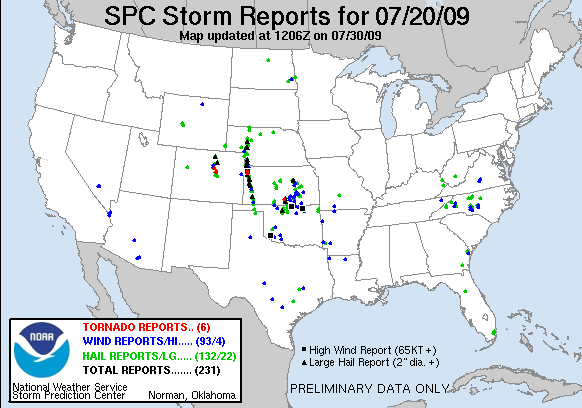The SPC has outlooked a very large area of the central plains tomorrow from Nebraska through Oklahoma. (
http://www.spc.noaa.gov/products/outlook/ ) They have even included a 30% hatched area...which I kinda find surprising considering the models were not agreeing with their thinking. Even the new WRF doesn't put major storms going through central Kansas Monday afternoon. I will be very interested in seeing their update at 1 am.
However, just listening to the SPC can really hurt you at times. For instance today when the SPC slowly enlarged their severe area through the day from and area from Texas to Colorado to result in an area from Texas to the Dakotas...which happened to be our original forecast. The SPC has a habit of slowly enlarging areas through the day up to their last afternoon update. I don't fully understand it really.
So what is going to happen tomorrow? Well, looking at the most recent NAM model run, the model has trended further west with many more storm initiating on central Kansas and Nebraska that before. This is much closer to the previous SPC outlook. Two shortwaves are shown moving through the central plains in Nebraska and Kansas with the first shortwave already moving into western Nebraska. This shortwave is the trigger for a lot of the storms today in the west. The wave will move into central and eastern Nebraska/Kansas by midday tomorrow, likely breaking out some early convection. However, this shortwave will move east allowing clearing for more storms in the mid to late afternoon evening as the second shortwave moves out into the central plains.
Decent divergent flow aloft will be in place over the central plains, dewpoints will easily be in the 60s tomorrow afternoon with dewpoints already into the lower 60s in portions of the high plains into west-central Nebraska, and CAPE values will be between 1000 and 2000 in the high to central plains. This should be plenty of energy should get things going in the afternoon as the shortwave moves through. Storms should develop quickly with possible supercells early, but a transition into a linear MCS should not take long. These systems should move south-southeasterly across the central plains. I wouldn't be surprised to see something develop in north-central Kansas or southern Nebraska and move through south-central or southeastern Kansas.
Of course, what I am referring to should be the 'Big Show' for the day. Additional storms will develop from western Texas through the eastern Dakotas into Minnesota, which will likely be severe. The main upper level energy will move through further north, thus triggering storms up north...while greater instability will lead to isolated storms down into western Texas.
So what would an outlook look like if I had to make one....well, here goes nothing (Note, the orange area is a 'greatest risk' area, not really a moderate risk like the SPC does. However, if there was one, I wouldn't be surprised if that's the area. Also, I am not outlooking hail here...):
PS: 97L (Really, 97? How did we get up to that?!) really started to look nice in the central Atlantic today but has quickly lost its convection during the day (diurnal minimum for convection over tropical waters). A refiring of convection could occur tonight, but the system will quickly move into more hostile conditions with strong wind shear taking apart the system. I do not have much confidence that this will be our first named system of the year at this time. However, begin to look off the eastern seaboard in the next week. A 'rabbit out of the hat' (Bastadi's term) system might be in the cards....




 And the system yesterday will help increase the potential for the coming weekend as a front shifts south through the plains. Already in areas where storms have developed the last few days, storms have redeveloped (in Montana, Wyoming, and South Dakota). These storms will once again produce an
And the system yesterday will help increase the potential for the coming weekend as a front shifts south through the plains. Already in areas where storms have developed the last few days, storms have redeveloped (in Montana, Wyoming, and South Dakota). These storms will once again produce an 
